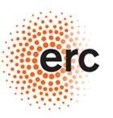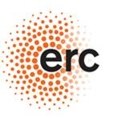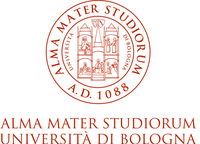
ERC Proof of Concept (2017-2019) as the Principal Investigator of a project entitled: “Luminescent silicon nanocrystals as bioimaging systems” (SiNBioSys)
Abstract: Optical imaging is a powerful tool for light-guided surgery and for the study of biological functions via dynamic visualization of processes in tissues and cells. Most of optical imaging techniques utilise fluorescent probes that can suffer from low contrast, due to scattering of the excitation light, and low tissue penetration. Silicon nanocrystals (SiNCs), developed within the ERC PhotoSi project, are a very promising alternative for this purpose: silicon is essentially non-toxic, easily available, and it can be covalently linked with dyes. The result is a highly-robust and biocompatible hybrid material, which exhibits colour tunability across the visible and near-infrared region. On top of that, the extraordinary brightness of the material coupled to a long-lived luminescence (lifetime of the hundreds of microseconds) enables time-gated detection. Therefore, SiNBioSys technology greatly improves the contrast of the obtained images with a low-cost equipment and with a material based on abundant and biocompatible elements (Si, C, O, H): it will enable innovative imaging tools for early diagnosis of diseases, particularly in the field of cancer and neuroscience.

ERC Starting Grant (2012-2017) as the Principal Investigator of a project entitled: “Silicon nanocrystals coated by photoactive molecules: a new class of organic-inorganic hybrid materials for solar energy conversion” (PhotoSi)
Abstract: Silicon nanocrystals have gained much attention in the last few years because of their remarkable optical and electronic properties, compared to bulk silicon. These unique properties are due to quantum confinement effects and are thus strongly dependent on the nanocrystal size, shape, surface functionalization and presence of defects. The aim of the present project is the coupling of Silicon nanocrystals with photo- and electroactive molecules or multicomponent systems, like dendrons, to build up a new class of hybrid materials to be employed in the field of light-to-electrical energy conversion (solar cells).

Bilateral Project Italy-Japan (active in 2021-2023) as coordinator of the Bologna research unit; title of the project: “Artificial Photosynthesis” (national coordinator: Prof. Sebastiano Campagna)“Artificial Photosynthesis”
Abstract: Artificial photosynthesis attracts much attention as one of the promising technologies for solving the global energy demand and environmental problems and for alleviating economic differences between countries. This project aims to exploit solar light for the production of solar fuels such as molecular hydrogen and valuable organic products from raw materials like water and carbon dioxide. Artificial photosynthesis provides solution to the problems connected with intermittency and low density power of solar energy, and represents the future of solar fuel production.

Proof of Concept (POC) funded by MISE and UNIBO (active in 2020-2022) for a project entitled "Silicon nanocrystals for luminescent solar concentrators"
Abstract: the project is devoted to develop and optimised silicon-based luminescent solar concentrators and to promote this technology towards an industrial development via: (i) market analysis, (ii) strategic partnership and (iii) promotional activities.

UNIBO Call4BusinessPlan (active in 2020-2022) project entitled "Luminescent silicon nanocrystals for energy technologies"
Abstract: The research project is funded by the POR FSE (regional laboratory for enterpreneurship). The research activity is aimed at the study of luminescent silicon nanocrystals as innovative materials with high performance in view of a sustainable development and innovation in the field of energy technologies, and the reduction of toxic emissions in the environment. In particular, it will be focused on the photochemical and photophysical characterization of new organic-inorganic hybrid materials consisting of silicon nanocrystals covalently functionalized with organic molecules.

Innovative Training Network (ITN) (2016-2020) as vice-coordinator (European Coordinator: Prof. Giacomo Bergamini) of a project entitled: “Entrepreneuring Dynamic Self-Organized Interfaces in Photocatalysis: A Multidisciplinary Training Network Converting Light into Products” (PHOTOTRAIN)
Abstract: The main focus of this 48 month project is the conversion of solar energy starting from the fundamental bases (photophysics), and including the design of photoactive molecules (organic chemistry) and the materials (colloidal chemistry), the study of the photoinduced processes (photochemistry and microscopy), performing and studying the reactions (physical chemistry), building a microfluidic photoreactor (physics and engineering), and planning an industrial-scalable chemical process (private sector). PHOTOTRAIN Early Stage Researchers (ESRs) will have mobility between network partners supported by research visits and secondments, allowing them to be integrated in the network with the aim to help them interact with their fellows and within different research, development and innovation environments.

Bilateral Project Italy-Japan (2017-2019) as coordinator of the Bologna research unit; title of the project: “A supramolecular approach to artificial photosynthesis” (national coordinator: Prof. Sebastiano Campagna)
Abstract: World demand for energy is projected to more than double by 2050 and to more than triple by the end of the century. Despite a spectacular growth, solar power production is still a minor player on a world scale. Artificial photosynthesis attracts much attention as one of the promising technologies for solving the global energy demand and environmental problems and for alleviating economic differences between countries. This project aims to exploit solar light for the production of solar fuels such as molecular hydrogen and valuable organic products from raw materials like water and carbon dioxide. Artificial photosynthesis provides solution to the problems connected with intermittency and low density power of solar energy, and represents the future of solar fuel production.
ENI (2018-2020) research collaboration on “Luminescent solar concentrators based on silicon nanocrystals”
Abstract: Luminescent solar concentrators, based on silicon nanocrystals (SiNCs) and constituted by a transparent waveguide that brings the light emitted by embedded SiNCs to a PV cell coupled to its edge, offer many advantages: (i) lack of toxicity compared to more conventional quantum dots, (ii) the abundance of the main component, (iii) high emission quantum yield, and (iv) the large energy difference between absorption and emission which enables the construction of transparent waveguides which absorb mainly in the UV and emit in the red or near-infrared spectral region, according to the SiNCs dimensions.

Vinci Programme (2015-2018) co-supervisor of a PhD student together with Prof. Marc Gingras (University of Marseille, France) on a project entitled: “Smart and highly phosphorescent asterisks for (bio)sensors, antennae and molecular imaging”.
Abstract: the research is focused on new classes of smart luminescent compounds, whose phosphorescence is strongly enhanced in a rigid matrix, like nanoaggregates and crystals. They are potentially interesting in the fields of organic materials for optics (OLED), chemical biology (imaging), chemical sensors and nanoscience (organic nanodots). With this approach no toxic or rare element, like lanthanides, is used. The working principle of the present project is that phosphorescence can be switched on by conformational restriction due to media rigidification. Dendrtic light-harvesting antenna will be coupled to this new class of organic phosphorescent materials to enhance the brightness of the system.

FIRB "Futuro in ricerca" (2012-2016) as coordinator of the Bologna research unit of a project entitled: “Supramolecularly templated synthesis of homochiral carbon nanotubes for photovoltaic applications” (SUPRACARBON)
Abstract: The use of carbon nanotubes (CNTs) in the development of next generation high performance solar cells is one of the ways to have an efficient sunlight harvesting, and is currently one of the hot topics in the field of organic solar cells. However, the route towards CNT-based materials on material science for nanotechnological applications such as solar energy transducer devices is severely limited by the difficulties of producing structurally controlled CNTs (e.g., diameter, length and helicity to name a few parameters). The structural control would enable to get, for example, all the semiconductor nanotubes with the same gap. The objective of this multidisciplinary project, SUPRACARBON, is to demonstrate the feasibility of organizing and engineering surfaces with defined chiral host and receptor sites, perhaps aligned in a periodic manner, where catalyst clusters can be hosted. Using these catalysts, the nanotubes should grow following the chirality of the receptor sites.

Bilateral significant project Italy – USA (2014-2015, Ministry of Foreign Affairs) as a coordinator of a project entitled: “Dendritic upconverting nanoparticles for optical imaging” in collaboration with Prof. Sergei Vinogradov (Department of Biochemistry and Biophysics, UPenn, Philadelphia, US)
Abstract: The present project is based on a novel class of nanomaterials for optical imaging, comprising lanthanide upconverting nanoparticles (UCNPs) and dendrimers. The absorption of two or more photons by UCNPs leads to the emission of light at shorter wavelength than the excitation wavelength. The outstanding property of UCNPs is that this energy upconversion process can be induced by low-power infrared continuous wave light sources, very useful for depth-resolved high-resolution microscopy. Dendrimers are repeatedly branched tree-like macromolecules that exhibit well-defined structures and a high degree of structural complexity. By using suitable synthetic strategies it is possible to prepare dendrimers that contain selected functional units in predetermined sites of their structure, namely core, branches and surface. Combining UCNPs and dendrimers is the key novelty of our project. Modification of UCNP surfaces with hydrophilic dendrimers will make up an efficient and general route to soluble bio-compatible UCNPs. The dendrimers will also provide recognition sites in order to induce selective sensing of specific biological analytes, like Ca2+ and pH.

Marie Curie International Incoming Fellowships (2011-2013) as coordinator of a project entitled “Lanthanide Dendrimer-Polymer Hybrids” (Ln-Dendri-Pols), Fellow: Dr. Evan Guy Moore
Abstract: Organic complexes of lanthanides are enjoying a renaissance due to their increased commercial usage (eg. in lighting/display devices, as MRI contrast agents, as luminescent markers for bioassay). However, considerable challenges remain to overcome the low molar absorbance coefficients of Ln(III) cations and limited luminescent performance of emitters in the Near-Infra Red (NIR). This project will characterise lanthanide chelates with unique topologies provided by dendrimers and 'star-shaped' polymer materials, which allow for the incorporation of multiple sensitizing chromophores and shield the luminescent metal from deactivation by its immediate environment. These compounds will have improved luminescent performance at wavelengths desired for biological assays and biomedical imaging.

PRIN 2010-11 (active in 2013-2015) as member of the Bologna research unit coordinated by Francesco Paolucci: “Hierarchical Photosynthetic Nano-Structures for Carbon-Neutral Renewable Energy (HI-PHUTURE)” (national coordinator Prof. Maurizio Prato)
Abstract: The goal of the HI-PHUTURE consortium is to address the fundamental principles of an integrated H2O oxidation/CO2 reduction cycle, for efficient solar energy storage, and environment remediation. The ultimate target is to drive CO2 photoreduction to liquid fuels such as methanol, methane or light hydrocarbons, as well as to commodity chemicals such as formic acid/formate or synthetic gas (H2/CO mixture), while using H2O as the primary, carbon-free, renewable source of reducing equivalents (electrons, protons, and/or H2).The scientific objectives focus on the design and assembly of innovative photosynthetic nanostructures enabling a series of cascade events and targeting the fundamental and applicative challenges of photocatalysis for small molecule activation: (i) the light-driven oxidation of H2O to extract oxygen, protons and electrons as reducing equivalents; (ii) the active absorption/capturing/concentration of CO2 leading to stabilized/reactive intermediates (iii) the engineering of multi-redox catalysts; (iv) the bottom-up fabrication of reactive surfaces (electrodes and heterogeneous assemblies).

Bilateral significant project Italy – China (2010-2013, Ministry of Foreign Affairs) as a coordinator of a project entitled:“Dendrimers as new materials for enviromentally friendly solar cells” in collaboration with Prof. Yuguo Ma (Peking University, Beijing, China)
Abstract: Dendrimers are monodisperse macromolecules with a nanometric well defined tree-like structure. Their architecture is reminiscent of that of natural light harvesting complexes, and is very attractive for the construction of artificial antennae to collect solar light. Selected functional groups can be placed in predetermined sites of their structure (core, branching points, and periphery). The present project aims at developing solar cells based on the Grätzel design, the so called Dye Sensitized Solar Cell (DSSC). The novelty of the present approach is related to the fact that the molecular photosensitizer adsorbed on TiO2 nanoparticles will be replaced by photoactive dendrimers or multichromophoric systems, so that different types of chromophoric units can be inserted and organized in the dimensions of time, energy, and space. This architecture will improve the matching between the efficiency of solar energy absorption and conversion into electricity.

Vinci Programme (2009-2012) co-supervisor of a PhD student together with Prof. Marc Gingras (University of Marseille, France) on a project entitled: “Molecular dendritic antennae as photosensitizers of solar cells”
Abstract:: Solar cells convert solar energy into electricity. Among the different types, Grätzel cells are based on sensitization of high band-gap semiconductors by dyes able to absorb solar light. To improve their efficiency, it is necessary to increase the fraction of light absorbed and reduce the possibility of recombination photogenerated charges. Dendrimers, monodisperse macromolecules, with well-defined structures can solve both problems. The goal of the present project is to design and synthesize dendrimers able to perform as efficient light-harvesting antennae on the entire solar spectrum. This energy should then be funneled to the dendrimer/semiconductor interface to have charge injection.

PRIN 2008 (active in 2009-2012) as coordinator of the Bologna research unit: “Photoactive Dendrimers as molecular antennae coupled to metallic nanoparticles” (national coordinator Prof. Franco Scandola)
Abstract: The research project is focussed on the conversion of solar energy into chemical energy: to reach this goal, the first step is solar light harvesting. Main goal of the work done by this research unit is indeed the design and characterization of artificial molecular antennae, i.e. multicomponent systems where several chromophores absorb light and funnel the electronic energy toward a single common acceptor. The originality of the present project consists in coupling the tasks of molecular antennae and metal nanoparticle containers by dendrimers. The obtained photoactive dendrimers will be employed in the hydrogen production by water photolysis in the presence, at least in the first stage, of a sacrificial reagent.
FIRB 2010 (active in 2012-2016) as member of the Bologna research unit coordinated by Margherita Venturi: “Photocatalytic nanosystems for artificial photosynthesis and hydrogen production by solar-driven water splitting” (NANO-SOLAR) (national coordinator: Prof. Sebastiano Campagna)
Abstract: NANO-SOLAR is a 4-year project addressing the major energy challenge of sun-driven water splitting for the efficient production of hydrogen as clean fuel. The technical innovation of this project lies in the design and fabrication of a photoelectrochemical cell, integrating two totally new, nanostructured, photo-electrodes. This working device will generate the parallel evolution of O2 and H2 under continuous visible light irradiation. The overall approach mimics natural photosynthesis and the solar-powered “Z-scheme”.